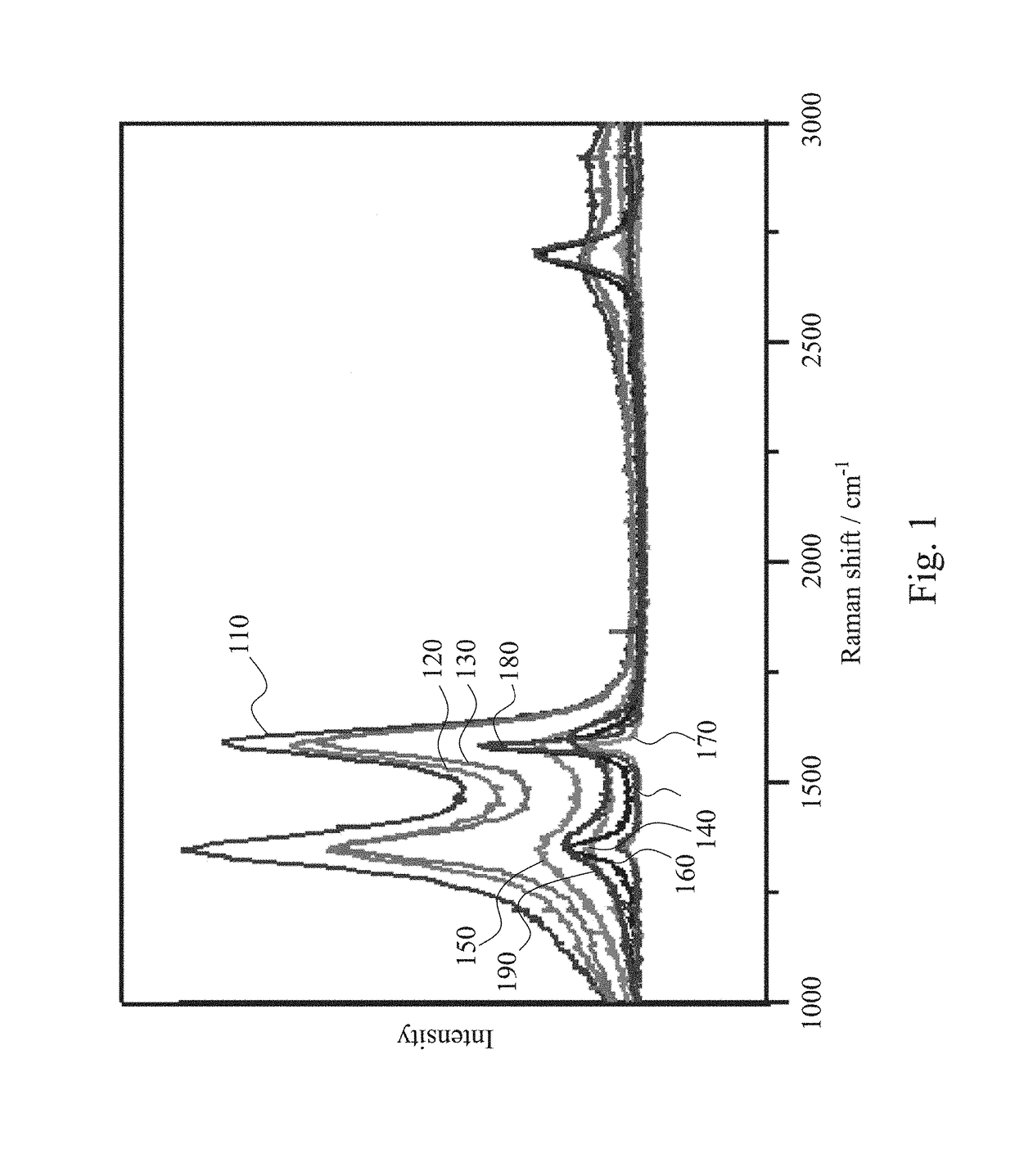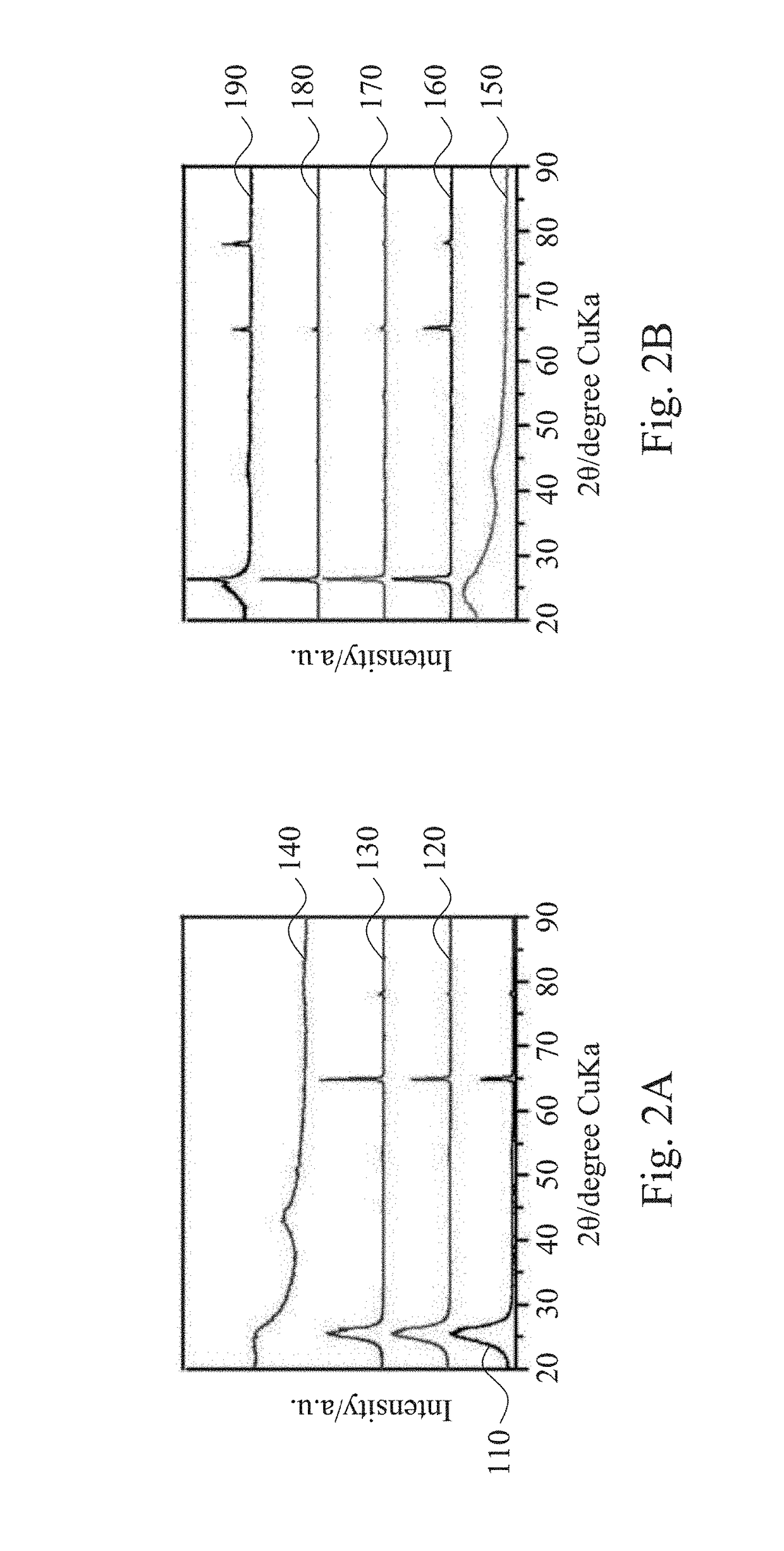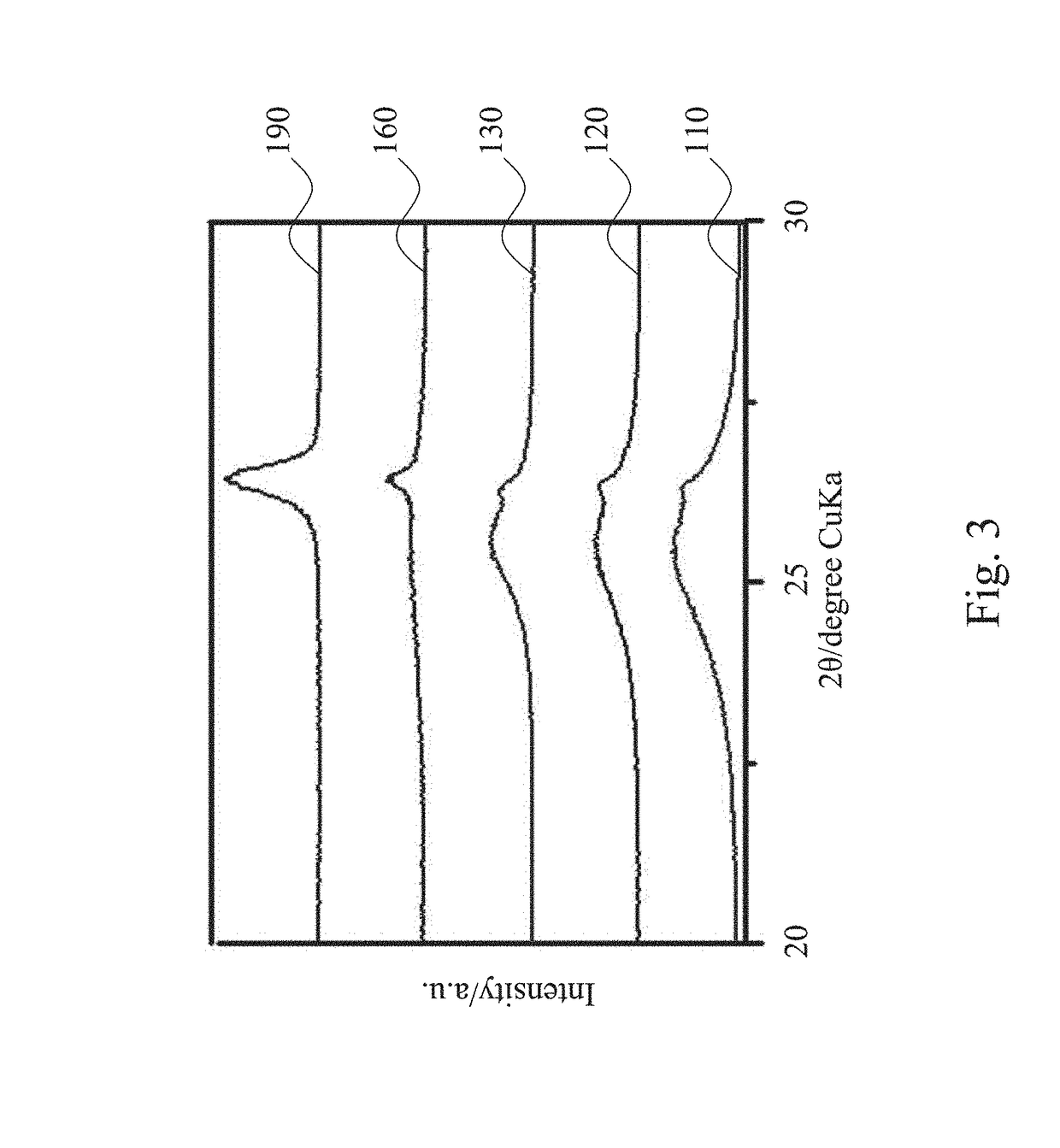Asymmetric electrical double-layer capacitor using electrochemical activated carbon
a double-layer capacitor and electrochemical technology, applied in hybrid capacitor electrodes, electric vehicles, transportation and packaging, etc., can solve the problems of high water retention in porous structures, excessive gas production, surging pressure, etc., to achieve higher energy density, less gas emission, and high cell voltage stability
- Summary
- Abstract
- Description
- Claims
- Application Information
AI Technical Summary
Benefits of technology
Problems solved by technology
Method used
Image
Examples
Embodiment Construction
[0023]Reference will now be made in detail to the present embodiments of the invention, examples of which are illustrated in the accompanying drawings. Wherever possible, the same reference numbers are used in the drawings and the description to refer to the same or like parts.
[0024]An asymmetric electrical double-layer capacitor, or asymmetric supercapacitor, uses two different mechanisms at positive and negative electrodes. The asymmetric supercapacitor may have a combination of a battery-type material and a double-layer type material. Based on the charge storage mechanism of dual carbon battery, graphitic carbon can be intercalated with cations and anions in either highly negative or positive potential range.
[0025]In some embodiments of the instant disclosure, the negative electrode is a double-layer type negative carbon electrode. The asymmetric supercapacitor stores electrostatic energy in a polarized liquid layer that forms when an electrical potential exists between the two e...
PUM
| Property | Measurement | Unit |
|---|---|---|
| cell voltage | aaaaa | aaaaa |
| cell voltage | aaaaa | aaaaa |
| wavelength | aaaaa | aaaaa |
Abstract
Description
Claims
Application Information
 Login to View More
Login to View More - R&D
- Intellectual Property
- Life Sciences
- Materials
- Tech Scout
- Unparalleled Data Quality
- Higher Quality Content
- 60% Fewer Hallucinations
Browse by: Latest US Patents, China's latest patents, Technical Efficacy Thesaurus, Application Domain, Technology Topic, Popular Technical Reports.
© 2025 PatSnap. All rights reserved.Legal|Privacy policy|Modern Slavery Act Transparency Statement|Sitemap|About US| Contact US: help@patsnap.com



